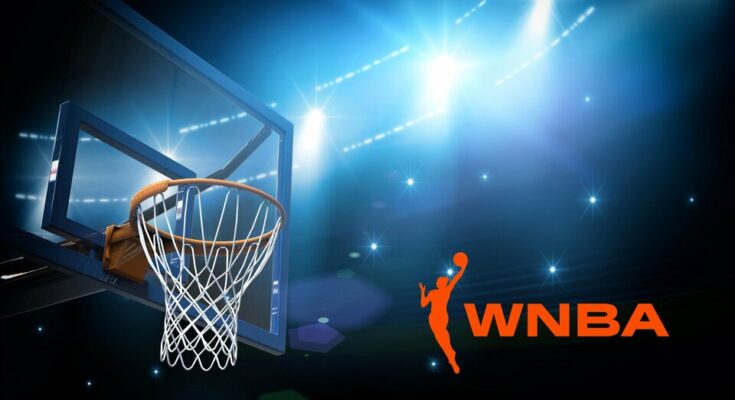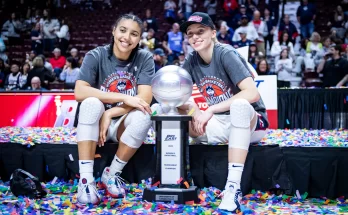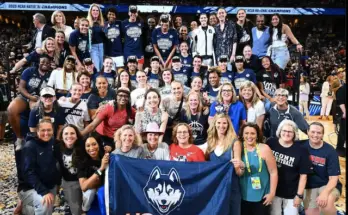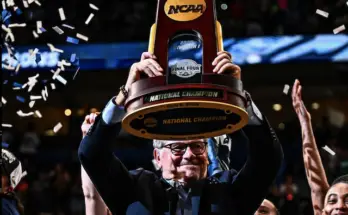In the world of professional basketball, the road to stardom is paved with relentless dedication, resilience, and an unwavering passion for the game. For most WNBA stars, it begins long before the first whistle of any professional game; they begin on college courts, honing their skills, facing fierce competition, and preparing themselves for the bright lights of the Women’s National Basketball Association. From the stress of NCAA championships to struggling through the transition into the pro league, WNBA players have complete careers of unforgettable moments and unique struggles.
This blog will trace the journey of WNBA stars from collegiate days to professional success-underlining how early experiences lay the bedrock for the remarkable careers that one sees today.
College Years: The Most Important Step of Player Development
For most WNBA players, college is where they truly emerge as top-tier athletes. Women’s college basketball is highly competitive, from powerhouse programs in UConn to South Carolina, Baylor, and Stanford. The NCAA also serves as a great springboard for career launching; it brings forth a lot of coaching for these players to realize their full potential.
During these formative years, players develop skills that will define their basketball careers and how to handle great attention and scrutiny. Many future WNBA stars start to make their mark on the court during college basketball. Players like Diana Taurasi of UConn, Breanna Stewart of UConn, and A’ja Wilson of South Carolina, who had phenomenal college athlete careers, led their teams to capture national championships. Their college success was not just about individual accolades; it was about learning how to thrive under the intense scrutiny that comes with competing at the highest level.
Along with perfecting physical skills, collegiate athletes need to develop mental toughness. Pressing schedules, grueling practices, and balancing academics and athletics almost all push players to the limit. This is where mental preparation is essential when transitioning into the WNBA since further challenges arise at a much fiercer competition level.
The Transition From NCAA to WNBA
Transitioning from the collegiate level to the WNBA can be both exhilarating and daunting. While players in college may be highly touted, the level of competition has changed. The pace of the game speeds up; the level of competition rises with it. The longer season starts to wear and tear on the players’ bodies. The best players in the world are found within the WNBA, and even the most dominant college players need time to orient themselves.
The WNBA Draft is the formal portal to enter into the league. Every year, the top college players are selected to join the teams in the WNBA, marking their beginning in the professional field of play. Many players find it fulfilling after several years of hard work and sacrifice as they hear their name called on draft night. That is a moment for rejoicing-but it also ushers in a new phase of life, replete with its own share of problems.
Take, for instance, the case of Sabrina Ionescu, the superstar standout for the University of Oregon who was selected as the No. 1 overall pick in the 2020 WNBA Draft. Though Ionescu had an extremely successful college career-setting numerous records and collected many awards along the way, the first year as a pro was filled with difficulties, as she struggled through injuries and the pressure to adjust to the faster, more physical WNBA game. For players such as Ionescu, the transition period isn’t just about inconsistent opponents- it’s about adjusting to a new lifestyle that comes with the profession: living on the road in long stretches, balancing media commitments and fan expectations.
The Importance of Mentorship and Veteran Guidance
One of the critical aspects of this transition from college to the WNBA is the role of mentorship. Quite a number of rookies join teams with several key players who have years of professional basketball experience. This can be invaluable because experienced players guide young players through the nuances of the pro game, from understanding playbooks to dealing with the mental strain of a grueling season.
The WNBA is a very affiliative league; from Sue Bird to Candace Parker, almost every great player has spoken about the guidance they received from older teammates upon their own entrance into the league. In that way, each new group of rookies gets help with their transition into their new environment and, at the same time, gets the confidence boost they need to shine on the court.
The Effect of Sports Betting on the WNBA
With the legalization of sports betting in many states across the U.S. and Canada, more attention is being drawn to women’s basketball, creating new opportunities for fan engagement. Among WNBA players, the growing interest in betting has directly and indirectly affected perception in the league both in terms of visibility and overall appeal.
Sports betting allows fans to engage with the game in a new way, fostering a deeper connection to the WNBA. Bettors closely follow player stats, team performance, and game outcomes, contributing to increased media coverage and a broader fanbase. For players, this means increased attention, boosting their profiles and turning previously lesser-known stars into household names as fans begin to track their performance more closely.
With popular sports betting platforms, the leagues have opened up to partnerships and sponsorships. As more and more bettors became interested in the WNBA, companies involved in the sports betting industry started partnering with teams and individual players.
Conclusion
The journey from college to the WNBA is a testament to the dedication, resilience, and talent of the athletes who take the leap into professional basketball. It is a story of trials, triumphs, and growth on and off the court. For these women, their hoop dreams do not end when they graduate from college; they mature, grow, and blossom into lifelong careers characterized by hard work, perseverance, and enthusiasm toward achieving excellent results.
Check out Beyond Women’s Sports for more sporting news.




